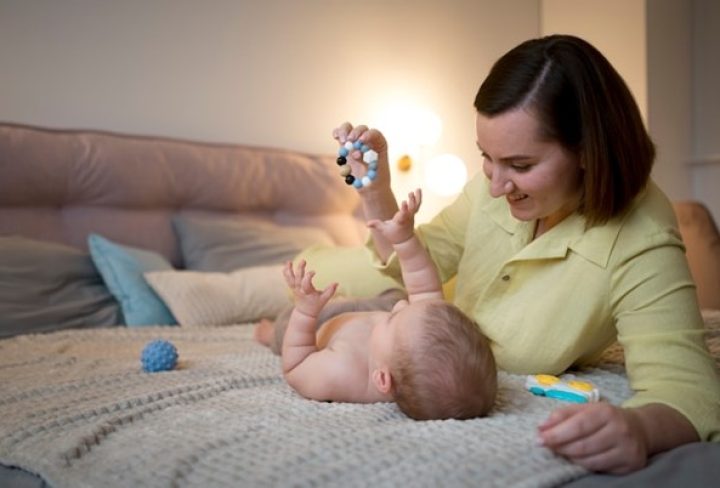Vision Development Milestones
Birth to 1 Month:
• Vision at Birth: Newborns can see, but their vision is quite blurry. They can focus on objects 8-12 inches away, such as your face during feeding.
• Color Vision: Babies are sensitive to high-contrast patterns (black and white). They can see large shapes and faces, and bright colors start to attract their attention.
• Movement and Light Sensitivity: They are drawn to moving objects and sensitive to bright light. They may blink in response to light or close their eyes.
1 to 3 Months:
• Focus and Tracking: By 1-2 months, babies begin to focus both eyes on an object and follow moving objects with their eyes.
• Color Vision: Around 2 months, they start to see colors more clearly, especially red and green.
• Eye Coordination: Improved coordination allows babies to track objects with their eyes. They enjoy looking at faces and bright objects.
3 to 6 Months:
• Depth Perception: By 3-4 months, depth perception begins to develop, allowing babies to see the world in three dimensions.
• Hand-Eye Coordination: They start reaching for objects, which helps refine hand-eye coordination.
• Color Vision: Color vision continues to improve, and they can distinguish between various shades of colors.
6 to 12 Months:
• Visual Acuity: Vision sharpens significantly. By 6 months, babies have better control over their eye movements and can focus on smaller objects.
• Recognizing People: They can recognize familiar faces across a room and show interest in detailed patterns and pictures.
• Crawling and Exploring: As they begin to crawl, their visual skills develop further through exploration.
12 to 24 Months:
• Improved Focus: By the end of the first year, babies can see almost as well as adults in terms of clarity and focus.
• Detail and Distance: They can see fine details and recognize people and objects at a distance.
• Color Vision: Fully developed color vision allows them to see the full spectrum of colors.
Vision Maturity and Adult Vision
• 2 to 3 Years: Vision continues to mature, and most children achieve near-adult levels of visual acuity by age 3. They can see clearly at various distances and distinguish intricate details and subtle color differences.
• 3 to 5 Years: Fine-tuning of vision continues, but by age 5, most children have fully developed vision similar to that of an adult.
Vision Screening Recommendations
• Newborn Screening: An initial vision screening should be done shortly after birth to check for congenital issues.
• First Year: Additional screenings at the 1-month, 3-month, 6-month, and 12-month well-child visits.
• 1 to 2 Years: Regular screenings at 18 months and 24 months to monitor development and catch any issues early.
• Beyond 2 Years: Annual vision screenings during routine pediatric visits, or as recommended by your pediatrician.
Signs to Watch For
• Crossed Eyes: If your baby’s eyes seem to cross or wander frequently beyond 3-4 months of age, consult your pediatrician.
• Lack of Eye Contact: If your baby avoids eye contact or doesn’t follow moving objects by 3-4 months, it may indicate a vision problem.
• Unusual Eye Movements: Any unusual eye movements, such as rapid or jerky movements, should be evaluated.
Conclusion
Your baby’s vision development is a crucial part of their overall growth. Regular checkups and screenings are essential to ensure their vision is developing normally and to address any issues early. By understanding these milestones and keeping an eye on your child’s visual progress, you can help support their healthy development and ensure they have the best possible start in life.

